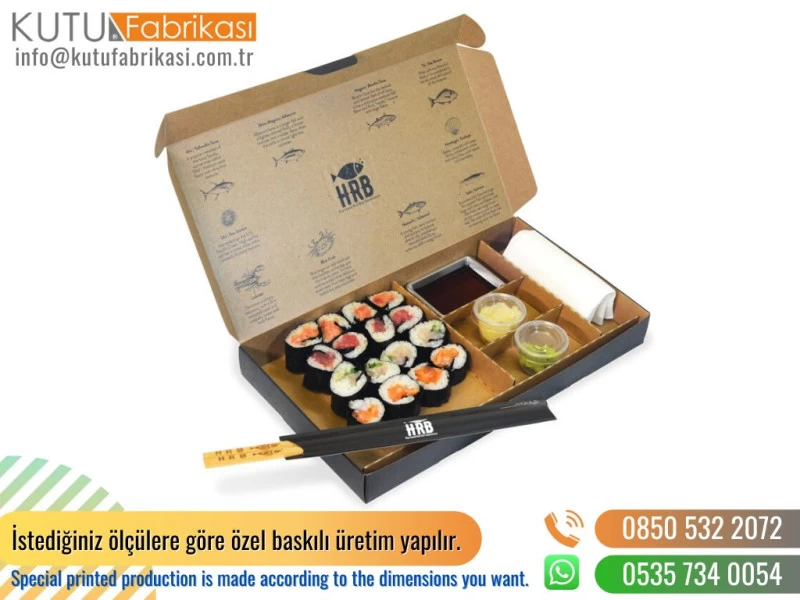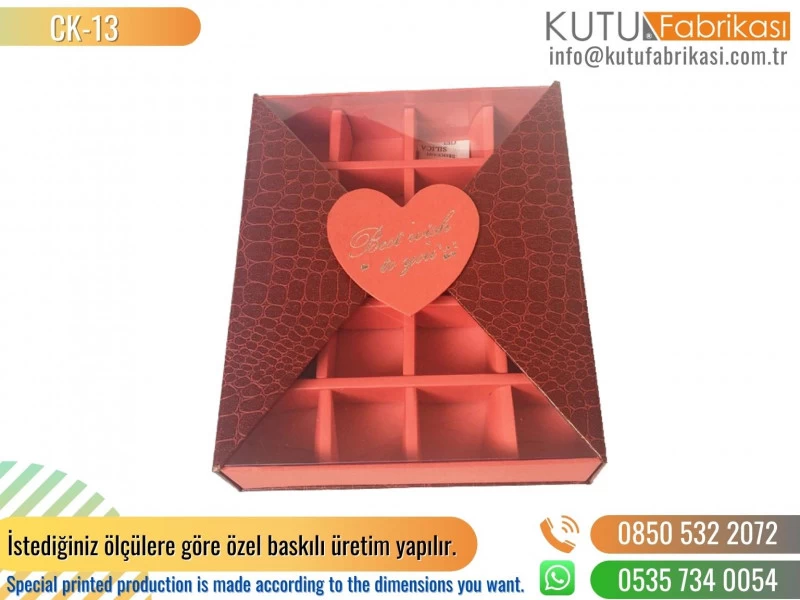Boxes with Separator (17)
Separator and Box Manufacturing
The Versatility of Box Manufacturing for Diverse Industries
In the realm of packaging, box manufacturing plays a crucial role in the success of various products, from delightful confections to essential e-commerce goods. Employing materials such as paper, cardboard, velvet, metal, wood, plastic, and PVC, manufacturers craft boxes that are not only protective but also enhance the overall aesthetic appeal of the items they hold. This variety ensures that every product can be presented in a way that best represents the brand's image and values. With the capability to export globally, the reach of well-designed boxes extends far beyond local markets, propelling brands into international recognition.
- Durable construction for product safety
- Custom design options for brand distinction
- Material diversity for unique packaging needs
- Eco-friendly solutions for sustainable branding
Key Benefits of Choosing the Right Box Manufacturing Materials
The choice of material for your boxes speaks directly to the quality of your brand. Whether you are showcasing decadent pastries or securing a high-tech gadget, the boxes with separator feature add an extra layer of protection and presentation. For example, velvet boxes exude luxury and are perfect for high-end jewelry or specialty gifts, while sturdy cardboard is ideal for e-commerce packaging, offering a balance between protection and weight for cost-effective shipping.
Frequently Asked Considerations in Box Manufacturing
What material offers the best protection and presentation for baked goods?
For items like pastries and baklava, paper and cardboard boxes with food-safe coatings provide the necessary protection against moisture while presenting the product elegantly. The choice largely depends on the product's requirements and the impression the brand wishes to make.
How can box manufacturing cater to the unique requirements of e-commerce?
E-commerce boxes must be resilient and versatile. Custom inserts, robust design, and secure closures protect products during transit. Considering these factors in the design phase can significantly enhance customer satisfaction upon delivery.
What are the advantages of using eco-friendly materials in box manufacturing?
Sustainability is a growing concern among consumers. Utilizing recycled paper, biodegradable plastics, or sustainably sourced wood not only appeals to the eco-conscious market but also reflects positively on the brand's environmental commitments.
Can box manufacturing be tailored for specific industries such as cosmetics and jewelry?
Absolutely. Specialized boxes for industries like cosmetics and jewelry often require additional aesthetic elements and protection. Velvet linings, custom compartments, and reinforced structures are just some of the tailored features that can be incorporated into the design.
Imagine discovering a box where the packaging itself represents cutting-edge technology—where smart symbols printed with edible inks guide you to interactive content or reveal the brand's story. What kind of impact would such packaging innovation have on your experience with the product? Visit our product boxes page to explore a world where packaging meets technology.
Today's market demands packaging solutions that are as sophisticated as the products they carry. With a broad spectrum of materials at hand, the potential designs for your boxes are limitless. Have you contemplated whether a minimalist approach or an ornate design aligns best with your brand's narrative?
The separators placed inside the boxes are the inner compartments used to separate the products in the box from each other and place them in an orderly manner. Separators are usually made of materials such as cardboard, cardboard, plastic or foam and facilitate the protection and transportation of the products inside the box.
Separators can be of different sizes and shapes and can be designed for various purposes. For example, foam separators can be used to separate fragile or delicate items inside the box. These separators prevent the products from colliding in the box and prevent them from being damaged.
In addition, cardboard or cardboard partitions can be used to place the products in the box in an orderly manner and to prevent the products from mixing with each other. These compartments keep the products in a fixed position, reducing the risk of damage during transportation or transportation. . These interior partitions added inside the box both ensure the protection of the products and provide an orderly presentation. In this way, it is possible to deliver quality and robust products to the customer by preventing the products in the boxes from being damaged.



















